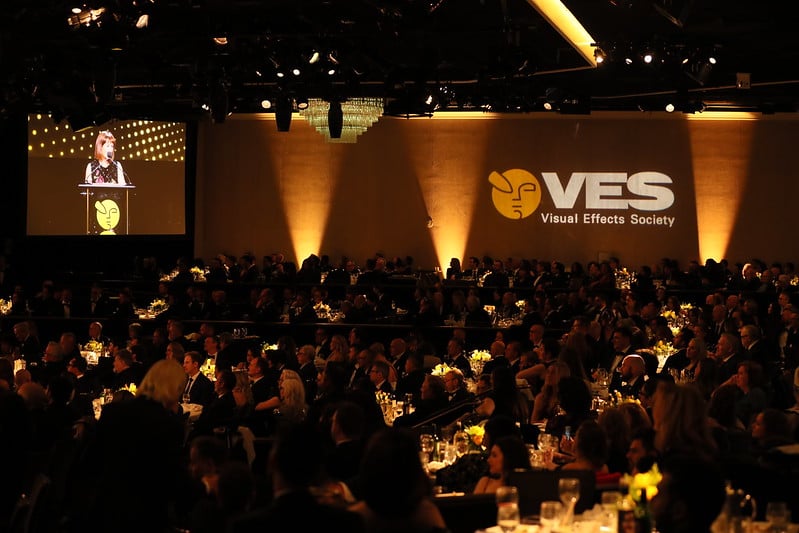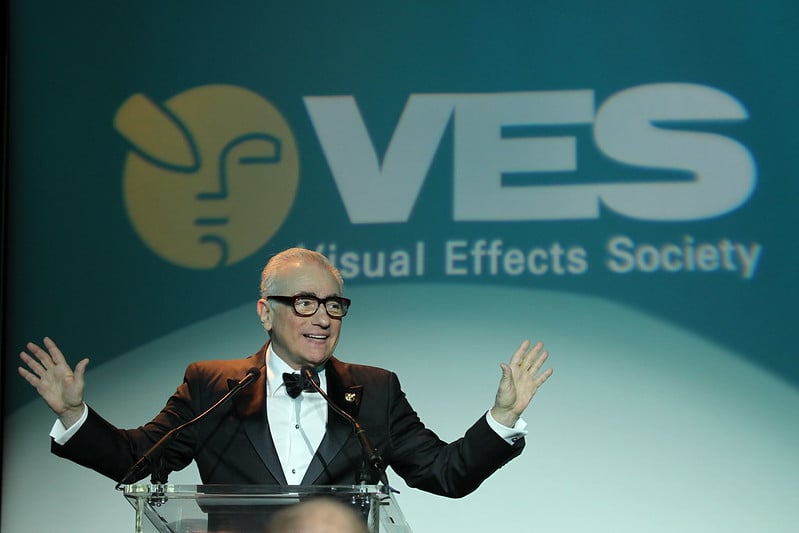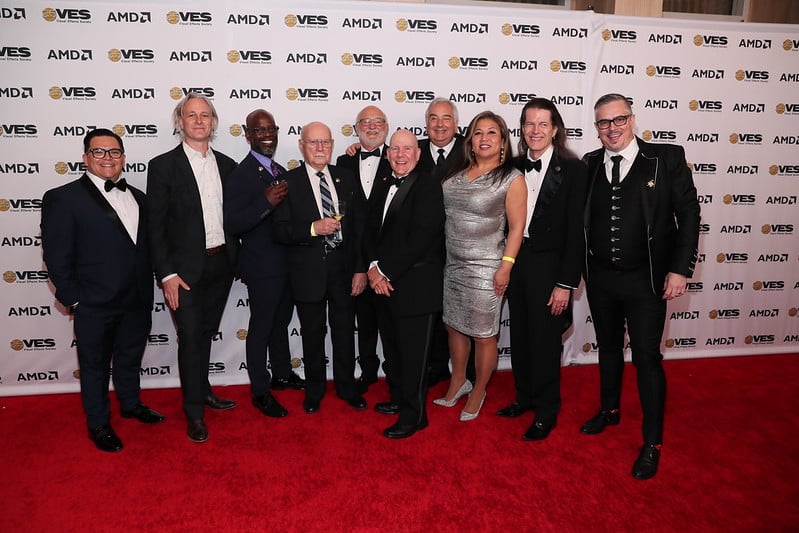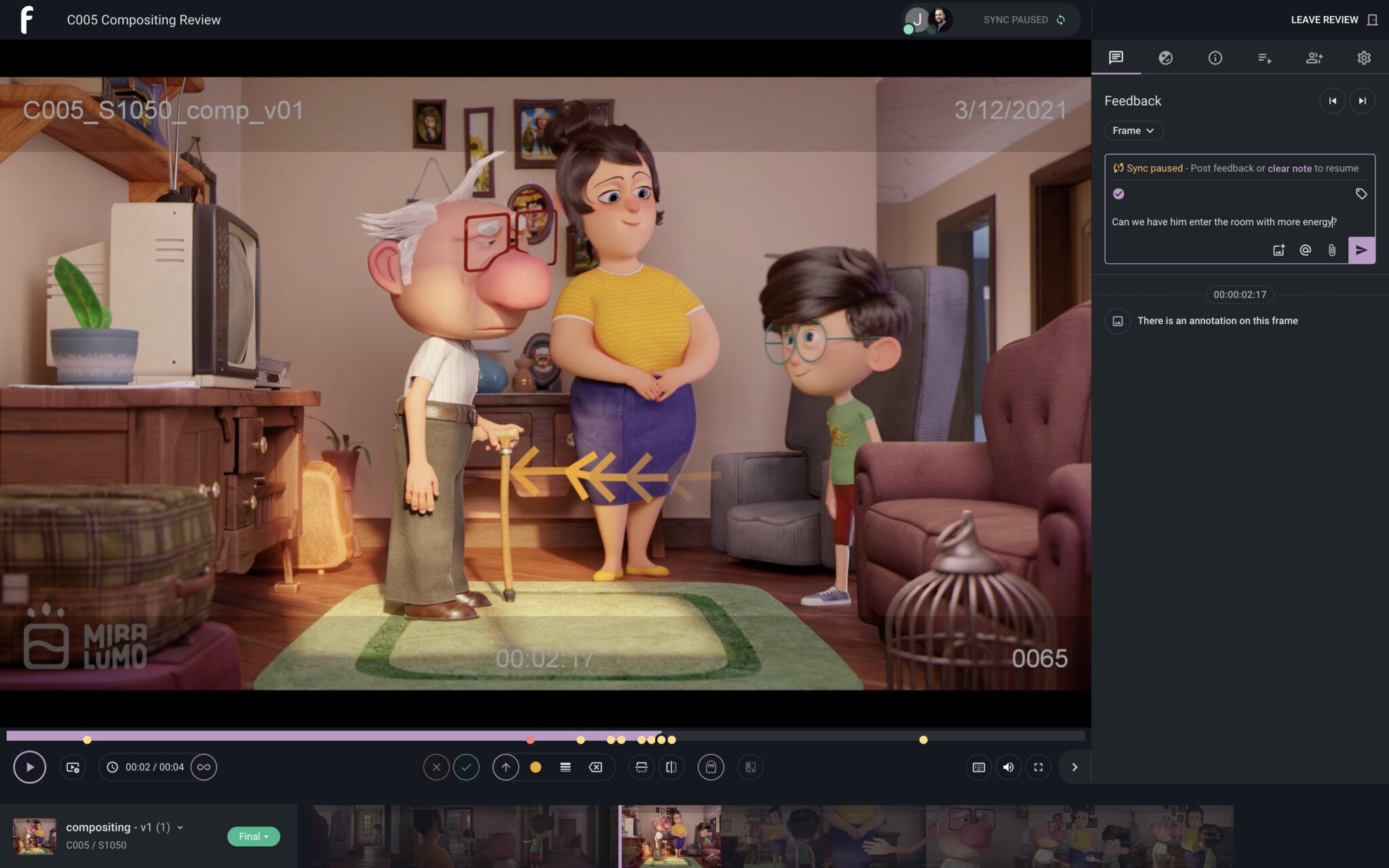Backlight was thrilled to be invited by the Visual Effects Society (VES) – the VFX industry’s premier global honorary society – to help support the virtual judging process for its prestigious 22nd Annual VES Awards. Read on to learn how the VES leveraged Backlight’s ftrack Studio to keep things running smoothly, even when adverse weather conditions threatened in-person events.
The Visual Effects Society (VES) is the visual effects industry’s premier global professional honorary society. With nearly 5,000 members spanning 49 countries, the VES represents the full spectrum of visual effects practitioners working across film, television, commercials, animation, special venues, games, and new media.

Each year, the VES Awards sets the stage for honoring the pinnacle of visual effects talent and innovation worldwide. It’s a unique celebration that recognizes exceptional VFX artistry alongside the visionary VFX supervisors, producers, and artists who breathe life into these creations. Highlights from past ceremonies include lifetime achievement accolades for luminaries including Sir Peter Jackson, JJ Abrams, and Martin Scorsese, recognition for groundbreaking technology in Avatar: The Way of Water, acclaim for episodic juggernaut Game of Thrones, and accolades for character animation in Guillermo del Toro’s Pinocchio.

The judging process for the VES Awards is a complex and considered process – and this was no different for judging the 22nd Annual VES Awards, to be held in February 2024. The VES had nearly 500 judges closely evaluating over 500 submissions, which in turn required the VES to manage 24 in-person panels and 15 virtual panels – sometimes managing up to 26 panels simultaneously! Given the challenges, the annual VES Awards required a robust, flexible platform to share submissions with its international judging panels within a tight 30-hour window.
Backlight stepped up with the interactive media review functionality of ftrack Studio, offering a powerful solution for content management and virtual panel hosting. Leveraging Backlight’s deep roots in the visual effects community and the team’s understanding of the demands of remote collaboration and content review, the partnership rang true. It also proved highly effective, ensuring the VES could conduct its Awards judging process smoothly, underlining the society’s reputation for excellence.
The VES judging process: A global endeavor
Lopsie Schwartz, a seasoned VFX Supervisor with a 25-year tenure in the VFX realm and credits on projects such as Stranger Things, The Flash, and The Lord of the Rings, plays a pivotal role in the VES Awards as both a VES Board of Directors member and the Co-Chair of the VES Awards Committee. Her expertise and leadership were instrumental in orchestrating the 22nd Annual VES Awards judging process.
“To kick things off, we have a committee vet every submission that comes in via the awards management platform Award Force to ensure its legitimacy,” Lopsie explains of the awards judging process. “Subsequently, we leverage ftrack Studio to facilitate the global judging process, which unfolds simultaneously over a 30-hour window. This includes participation from locales like New Zealand, France, and the UK, spanning six different time zones and accommodating both in-person and virtual formats across 15 VES sections. Ultimately, we coordinated 39 panels, blending in-person and virtual engagements, with over 500 judges contributing. The scale of participation is truly remarkable.”
 The VES Awards feature 25 distinct categories, encompassing a broad spectrum from Outstanding Visual Effects in a Photoreal Episode to Outstanding Compositing and Lighting in a Commercial. Each category receives multiple entries, with at least three panels reviewing each submission to ensure thorough evaluation.
The VES Awards feature 25 distinct categories, encompassing a broad spectrum from Outstanding Visual Effects in a Photoreal Episode to Outstanding Compositing and Lighting in a Commercial. Each category receives multiple entries, with at least three panels reviewing each submission to ensure thorough evaluation.
“Submission lengths vary by category,” Lopsie elaborates. “For instance, the Outstanding Visual Effects in a Photoreal Feature category requires three minutes for the main submission and an additional three and a half minutes for the before-and-after breakdowns, showcasing the meticulous work involved. Reviewing a single category could extend to approximately four and a half hours.
“We invest significant attention in each submission, driven by our profound respect for the work and the dedication of the artists involved,” Lopsie adds.
Facilitating global collaboration with remote review
As might be expected, significant logistical complexities are involved with gathering judges from across the globe for the VES Awards, particularly where geographical distances or other constraints render physical attendance impractical. In cities like Los Angeles or London, assembling judges was feasible, but the challenge intensified when considering the global dispersion of talent across Europe and Asia. This is where the virtual panels, orchestrated via ftrack Studio, became invaluable.
“Although the VES originated in Los Angeles, at the VES, we are a truly global society,” says Lopsie. “The visual effects industry is thriving worldwide involving a tapestry of nationalities. Our judging panel needed to reflect this, so the ability to host the panels virtually and invite all our sections for an international review was crucial. ftrack Studio allowed us to maintain this global inclusivity.”
The Oceania panel and Asia panels exemplified the utility of these virtual panels, which catered to participants from New Zealand, Australia, Hong Kong, Singapore, Japan, and India. However, virtual attendance proved beneficial even in the world’s creative hubs. “Even Los Angeles had virtual panels. And if a judge was unable to attend due to the timing of a panel, they could attend one in a different time zone. For example, 10 am Saturday in Sydney is 3 pm in LA. Since everyone was starting their panels on Saturday morning, in whatever time zone they were in, there was always the opportunity to join another time panel on a different time zone, if required,” Lopsie explains. “Similarly, our panels in Paris, Berlin, and London benefited from remote review, accommodating judges who faced travel restrictions or concerns around COVID.”
Beyond facilitating review sessions, ftrack Studio was pivotal in managing the plethora of assets from the outset. The virtual panels saw VES media operators curate playlists of submissions by category, ordered differently for each panel to prevent unintentional bias. However, despite these randomized orders, the ballots for each judging event did need to stay in the specific order for that event. Thankfully, with ftrack Studio, if a media operator did move things around, they could hit a “reorder” button, and ftrack would return to the playlist to the correct play order for that ballot and judging panel, preserving the integrity of the judging process.
Once the playlists were ready, the VES could show the judging panels the categories they needed to watch in the correct order.
“The platform’s interactive, real-time media review functionality meant that every judge viewed the same frame simultaneously, fostering a unified judging experience,” says Lopsie. “Using ftrack’s Presentation Mode further centralized control, allowing our media operator to guide the session without interruptions or having anyone add annotations on the screen or make notes. Our media operator was in total control, ensuring a focused and efficient evaluation process.”
Adapting swiftly to challenges
ftrack Studio’s virtual review setup became critical when unforeseen weather conditions threatened the execution of the VES Awards judging process. For example, initially planned as an in-person event, a snowstorm rendered the Oregon judging session impractical, with many judges unable to travel to the designated location.
“Less than a day before the judges were to convene in Oregon, it became clear that a virtual format was our only viable option,” Lopsie recounts. “ftrack Studio was a lifeline in this scenario – setting up a new session virtually, despite the time constraints, was an easy adjustment.
And Oregon wasn’t an isolated case. “We faced similar uncertainties with our Washington panel,” says Lopsie. “Proactively, we prepared virtual backups for these panels to ensure continuity regardless of whether the in-person sessions could proceed.
“The ease with which we could transition to a virtual format and keep things running smoothly speaks volumes to the capabilities of ftrack Studio and the professionals who support it,” says Lopsie. “We could maintain the momentum of the judging process without compromise during those critical 30 hours – and that was all made possible by ftrack Studio and its people.”
Upholding security – A top priority for the VES
In the realm of the VES Awards, where unreleased content from highly anticipated movies, television shows, games, and commercials is scrutinized, security is paramount. The potential for leaks poses a significant risk, necessitating a platform that can safeguard sensitive materials while enabling a global panel of judges to review submissions collectively.
“Security emerged as a fundamental requirement for us and was a driver in our decision to utilize ftrack Studio for the awards process,” says Lopsie. “It was imperative that our collaboration tools not only allow our judges to review submissions in unison but also protect the confidentiality of these highly sensitive projects.”
 Backlight’s dedication to security is evident in its recent achievement of SOC 2 certification for ftrack Studio, a testament to its commitment to safeguarding client data. However, recognizing the unique security needs of the VES Awards, Backlight further demonstrated its customer focus by implementing additional features tailored to the VES Awards’ security requirements.
Backlight’s dedication to security is evident in its recent achievement of SOC 2 certification for ftrack Studio, a testament to its commitment to safeguarding client data. However, recognizing the unique security needs of the VES Awards, Backlight further demonstrated its customer focus by implementing additional features tailored to the VES Awards’ security requirements.
“We were particularly impressed with Backlight’s responsiveness to our security needs, including introducing a new feature – a hard cut-off for review sessions,” says Lopsie. “This feature ensured that upon a session’s conclusion, ftrack Studio automatically removes all participants, adding an extra layer of security and peace of mind for both us and the studios entrusting us with their content.”
Looking ahead: The future of collaboration between the VES and Backlight
 The integration of ftrack Studio into the VES Awards judging process marked a significant milestone, with all judges able to view content, make their judgments, and keep the process moving in a very tight timeframe. “ftrack Studio had an undeniably positive effect on the judging panels’ efficiency,” Lopsie reflects. “The platform enabled seamless coordination, allowing judges to access and review submissions in the precise sequence required from any location worldwide. Particularly during unforeseen challenges, like the transition to a virtual format for the Oregon event, ftrack Studio’s flexibility was hugely helpful, ensuring that our program could proceed without compromise.”
The integration of ftrack Studio into the VES Awards judging process marked a significant milestone, with all judges able to view content, make their judgments, and keep the process moving in a very tight timeframe. “ftrack Studio had an undeniably positive effect on the judging panels’ efficiency,” Lopsie reflects. “The platform enabled seamless coordination, allowing judges to access and review submissions in the precise sequence required from any location worldwide. Particularly during unforeseen challenges, like the transition to a virtual format for the Oregon event, ftrack Studio’s flexibility was hugely helpful, ensuring that our program could proceed without compromise.”
As the 22nd Annual VES Awards approach, the VES team, buoyed by the success of the recent judging panel, is already casting an eye toward the future. “We have our sights set on 2025, and we’re eager to delve into another year of celebrating exceptional creativity,” Lopsie shares. “Our initial planning kicks off in March, where we’ll outline our vision and objectives for the next cycle.”
The team’s anticipation extends to further leveraging ftrack Studio’s capabilities, particularly in streamlining processes. “We’re particularly excited about the possibilities of enhancing our workflow between Award Force and ftrack Studio and investigating what else is possible with the software. The potential for automating more of our processes is exciting, and we’re keen to uncover additional ways ftrack Studio can support our ambitions.”
With a year of preparation ahead, the VES and Backlight partnership is poised for great things. “We’re just excited to find out what else ftrack Studio can do – and we have a whole year to prepare,” Lopsie concludes. “I’m looking forward to taking things further with the VES Awards and Backlight. It’s a partnership we greatly value.”